Andaman And Nicobar Tour Packages
Andaman And Nicobar Family Tour Packages
Andaman Water Sports Tour Package
Andaman And Nicobar Honeymoon Tour Packages
Andaman Budget Tour Package
Exploring the Hidden Gems: Wildlife Sanctuaries in Andaman and Nicobar
The Andaman and Nicobar Islands are beautiful islands in the Bay of Bengal. They are wonderful places for lovers of the beach and adventure but have many unique animals and plants. There are special areas called wildlife sanctuaries on these islands to help protect these animals and their homes. Sadly, these special places are threatened due to things people do and changes in the environment. Going around the wildlife sanctuaries in Andaman and Nicobar, and seeing wonderful animals and plants, is also very crucial for helping take care of nature. These special places ensure the protection of the environment and keep it safe for the future. Let us visit these beautiful wildlife sanctuaries together and learn how you can help keep them safe and healthy!
Book here Andaman and Nicobar tour packages.
Major Wildlife Sanctuaries in the Andaman and Nicobar Islands
1. Mahatma Gandhi Marine National Park
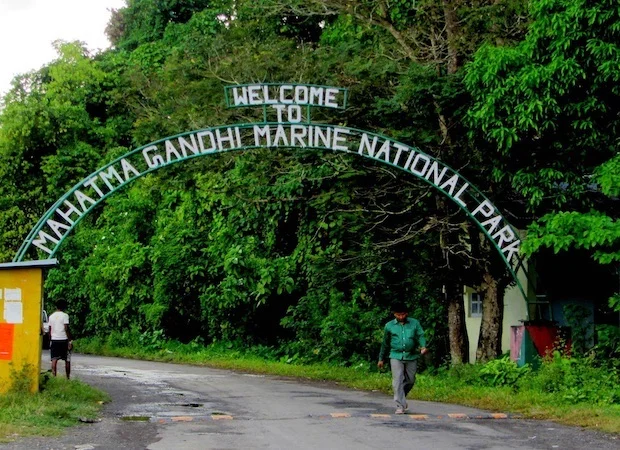
Located in South Andaman, this park is famous for its diverse marine life and vibrant coral reefs. Spanning over 280 square kilometers, it encompasses a series of islands and surrounding waters. The park is home to a wide variety of marine species, including endangered sea turtles, dolphins, and different fish species. It is a haven for marine biodiversity and serves as an important breeding ground for several aquatic species. Eco-tourism is promoted in the park, with activities like snorkeling and scuba diving, which allow tourists to explore the marine beauty while helping raise funds for conservation. Its coral reefs are threatened by climate change, making its protection crucial.
2. North Button Island National Park
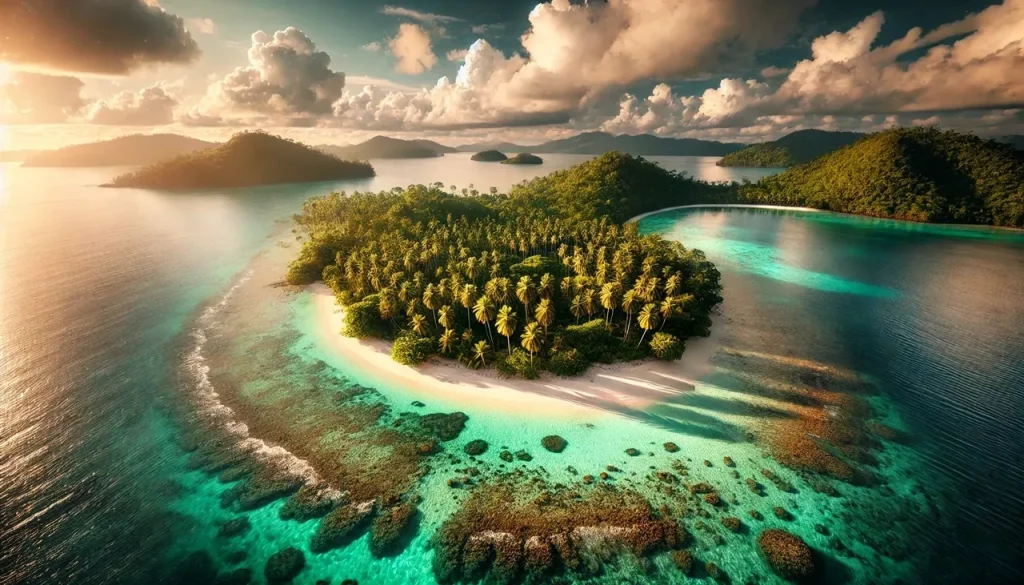
Situated in the North Andaman, North Button Island National Park is renowned for its pristine coral reefs and clear blue waters. The park is primarily a marine sanctuary, protecting important marine life such as dugongs, sea turtles, and various fish species. The surrounding waters are rich in biodiversity, making it an ideal spot for marine conservation. It also provides a safe habitat for numerous species of corals and other marine organisms, which are essential for the ecological balance of the region. The park’s remoteness helps reduce human interference, ensuring the preservation of its delicate ecosystems. However, it faces threats from overfishing and coral bleaching.
3. Saddle Peak National Park

Located on North Andaman Island, Saddle Peak National Park is home to the highest peak in the Andaman Islands, offering a unique landscape of tropical rainforests and diverse ecosystems. The park spans 1,000 square kilometers and is a sanctuary for a wide range of wildlife, including endemic species such as the Andaman wood pigeon and Nicobar pigeon. Its forests are home to various mammals, reptiles, and bird species, making it a key area for biodiversity conservation. The park also acts as an important watershed for the surrounding areas. It faces challenges such as poaching and habitat loss, but efforts are in place to ensure its protection. Trekking through the park is popular among eco-tourists, although access is limited to preserve its natural beauty.
4. Campbell Bay National Park
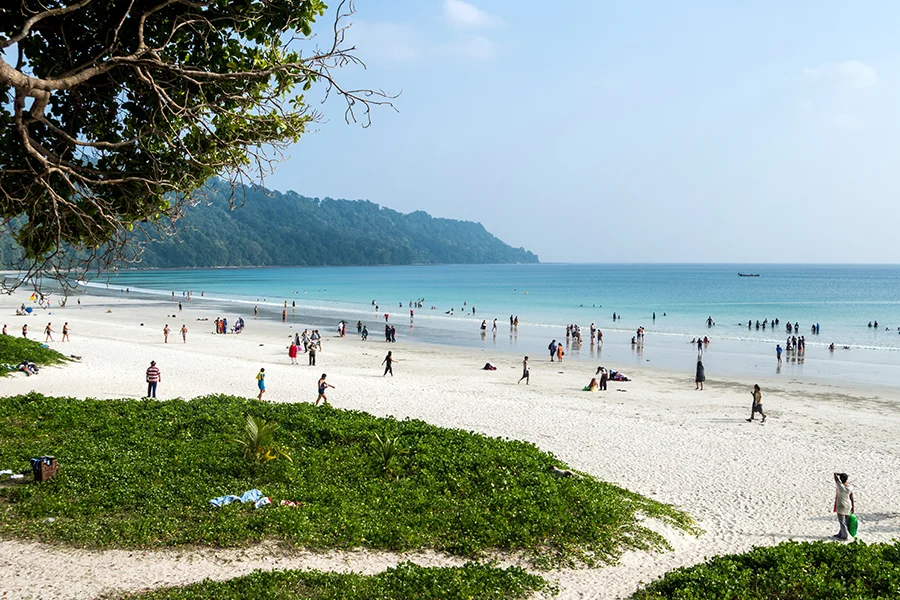
Located on Great Nicobar Island, Campbell Bay National Park is one of the most biodiverse protected areas in the region, with both tropical rainforests and coastal ecosystems. The park is home to a rich variety of flora and fauna, including saltwater crocodiles, the endangered Nicobar pigeon, and a diverse range of marine life. Its lush forests provide a haven for numerous endemic plant species. The park plays a critical role in protecting these ecosystems, which are under threat from deforestation and illegal activities. It also serves as an important conservation site for marine biodiversity, with surrounding coral reefs supporting a wide range of marine species. Efforts are made to regulate access and minimize human impact on the environment.
5. Ritchie's Archipelago

Ritchie’s Archipelago, located off the southeastern coast of South Andaman, consists of a series of islands known for their pristine coral reefs and rich marine biodiversity. The archipelago is an important conservation area for marine life, offering a haven for species such as sharks, rays, and a variety of fish. The islands are surrounded by crystal-clear waters, which provide ideal conditions for coral growth. These coral reefs are home to hundreds of marine species and are vital for maintaining the region’s marine food chain. The sanctuary is less accessible to tourists, which helps protect the delicate ecosystem. However, the area still faces threats from illegal fishing and climate change-induced coral bleaching.
6. Wandoor Marine Sanctuary
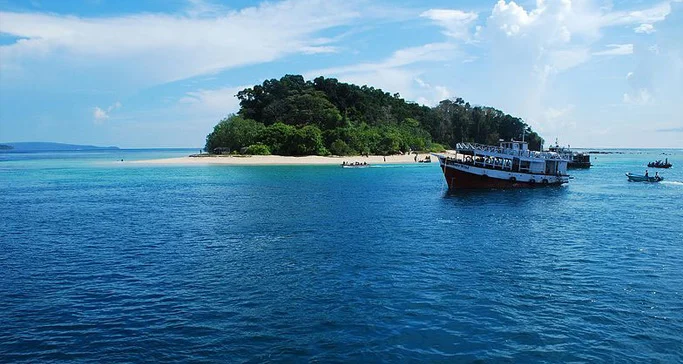
Wandoor Marine Sanctuary, located in South Andaman, is known for its clear blue waters and rich biodiversity. It is a vital marine ecosystem, with coral reefs, mangrove forests, and seagrass beds supporting a wide variety of marine life. Species such as dolphins, sea turtles, and various fish make this sanctuary their home, and it is a key area for marine biodiversity conservation. The sanctuary offers opportunities for eco-tourism, including snorkeling and scuba diving, allowing visitors to experience its underwater beauty. The sanctuary is at risk due to overfishing, pollution, and coral bleaching, making conservation efforts critical. Strict regulations are in place to minimize human impact on the area.
7. Chidiya Tapu
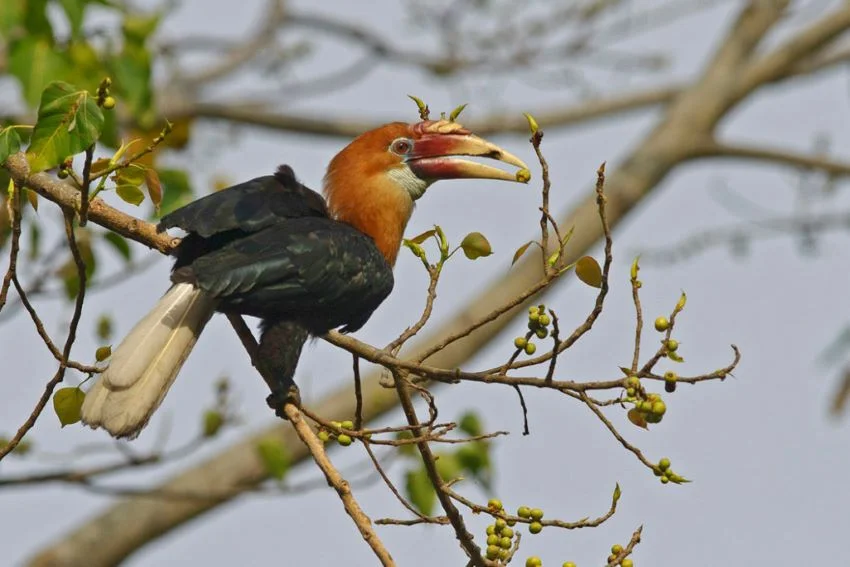
Located in South Andaman, Chidiya Tapu is a popular bird sanctuary known for its rich avian diversity. The area is a haven for birdwatchers, with over 50 species of birds, including migratory species, spotted throughout the year. The sanctuary is characterized by its dense forests, rocky outcrops, and panoramic views of the sea. Besides birds, the area is home to various reptiles and small mammals, adding to its ecological diversity. Chidiya Tapu is an important spot for the conservation of bird species, some of which are endemic to the Andaman and Nicobar Islands. Its accessibility for tourists is regulated to protect its natural habitats and minimize disturbances to wildlife.
8. Galathea Bay National Park
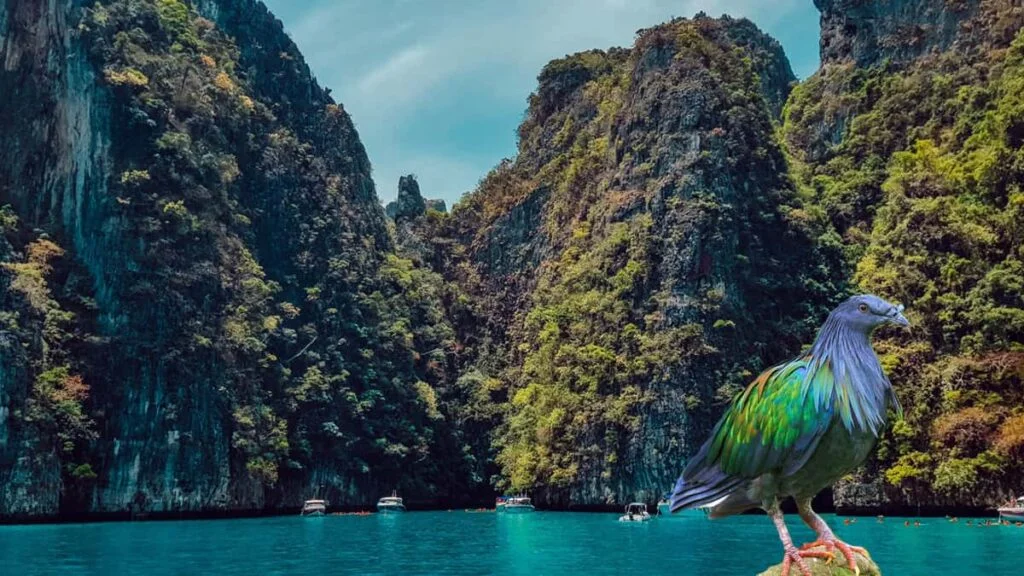
Galathea Bay National Park, located on Great Nicobar Island, is known for its diverse ecosystems, including tropical rainforests, mangroves, and coastal habitats. The park is famous for its role in the conservation of the Nicobar pigeon, a species endemic to the region and listed as vulnerable. The rich marine life in the bay, including coral reefs and sea turtles, adds to the park’s ecological value. The park is also home to various species of plants and animals, many of which are yet to be studied. With limited human settlement nearby, the park remains relatively untouched, which helps preserve its biodiversity. However, it faces threats from poaching and habitat destruction, requiring ongoing conservation efforts.
9. Baratang Island Wildlife Sanctuary

Located in Middle Andaman, Baratang Island Wildlife Sanctuary is a biodiversity hotspot that includes dense forests, mangroves, and estuarine ecosystems. The sanctuary is home to several species of reptiles, birds, and mammals, including the Andaman wild boar and the Nicobar scrub fowl. The rich mangrove forests provide vital breeding grounds for various species of fish and marine organisms. The island’s remote location has helped reduce human interference, preserving its fragile ecosystems. However, the sanctuary is threatened by encroachment and the increasing demand for resources. Conservation measures are needed to safeguard this vital ecological area for future generations.
10. Turtle Islands Sanctuary
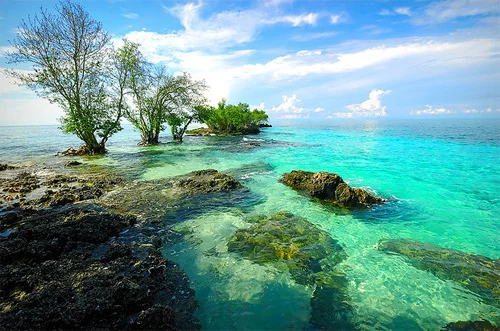
Situated in the Andaman Sea, Turtle Islands Sanctuary is dedicated to the protection of sea turtles, particularly the endangered green and olive ridley turtles. The islands serve as crucial nesting sites for these species, especially during the breeding season. The sanctuary is a significant conservation area for marine turtles, providing a safe environment for them to lay eggs without the threat of human disturbance. While the sanctuary helps protect turtle populations, it faces threats from illegal fishing, habitat destruction, and climate change. Efforts are made to monitor turtle populations, protect nesting sites, and prevent poaching. The sanctuary is an important link in the global conservation network for marine turtles.
Importance of Wildlife Sanctuaries in Conservation
Protection of Endangered Species
Wildlife sanctuaries play a vital role in safeguarding endangered species by offering them protected habitats, free from threats like poaching and habitat destruction. In the Andaman and Nicobar Islands, species such as the Nicobar pigeon, dugongs, and sea turtles are given special protection. These sanctuaries are essential for stabilizing populations, supporting breeding programs, and ensuring the survival of these vulnerable species for future generations.
Biodiversity Conservation
Sanctuaries are critical for preserving the diverse flora and fauna within their ecosystems, ensuring the survival of unique species and their interdependent relationships. In the Andaman and Nicobar Islands, sanctuaries protect vibrant coral reefs, dense mangroves, and lush tropical forests. These efforts maintain ecological resilience, which is essential for the region’s long-term environmental stability and health.
Ecological Balance
Wildlife sanctuaries contribute to the preservation of natural habitats, which helps maintain critical ecological processes. They protect food chains and support the survival of key species such as pollinators, predators, and prey. In the Andaman and Nicobar Islands, these balanced ecosystems are crucial for the health of terrestrial and marine environments, preventing degradation and fostering biodiversity.
Scientific Research and Education
Wildlife sanctuaries serve as living laboratories where researchers can study species, ecosystems, and habitats in their natural settings. These studies provide invaluable data for crafting effective conservation strategies. In the Andaman and Nicobar Islands, such research helps address issues like habitat loss and the effects of climate change. Sanctuaries also offer educational opportunities, raising public awareness about the importance of conservation and sustainability.
Sustainable Eco-tourism
Sanctuaries attract eco-tourists who contribute to conservation efforts by generating revenue that supports habitat protection and local livelihoods. Responsible tourism in the Andaman and Nicobar Islands promotes awareness about the region’s biodiversity and encourages sustainable practices. By balancing economic development with environmental preservation, eco-tourism ensures that the benefits of conservation reach both nature and communities.
Climate Change Mitigation
Sanctuaries help mitigate climate change by conserving carbon-rich ecosystems like mangroves, seagrasses, and forests, which act as natural carbon sinks. These ecosystems reduce greenhouse gases in the atmosphere and protect coastal areas from erosion, flooding, and extreme weather events. In the Andaman and Nicobar Islands, sanctuaries also provide a buffer against rising sea levels, making them vital for climate resilience and adaptation.
Challenges and Threats to Wildlife Sanctuaries in Andaman and Nicobar
1. Deforestation and Habitat Loss: Expanding human activities like settlements and infrastructure development destroy habitats, threatening native species. Forests and coastal ecosystems are particularly at risk, reducing biodiversity.
2. Climate Change and Rising Sea Levels: Rising sea levels and warming seas harm marine ecosystems, causing coral bleaching and habitat loss. Unpredictable weather patterns further disrupt the delicate ecological balance.
3. Poaching and Illegal Fishing: Endangered species like turtles and dugongs face threats from poaching and unsustainable fishing practices. These illegal activities undermine conservation efforts and reduce biodiversity.
4. Invasive Species: Invasive plants and animals outcompete native species for resources, disrupting ecosystems. This poses a major threat to the survival of endemic species in the islands.
5. Pollution: Plastic waste, oil spills, and marine debris degrade ecosystems and harm wildlife like sea turtles and fish. Land-based pollution also impacts forests and freshwater habitats.
6. Natural Disasters: Frequent tsunamis, cyclones, and earthquakes devastate habitats and displace wildlife. The 2004 tsunami significantly impacted the islands’ biodiversity and ecosystems.
7. Human-Wildlife Conflict: Encroachment into protected areas increases conflicts, harming both humans and wildlife. Saltwater crocodiles and humans often come into dangerous interactions in shared spaces.
8. Limited Funding and Resources: Insufficient funds and resources hinder patrolling, research, and habitat restoration efforts. This leaves sanctuaries vulnerable to poaching, encroachment, and neglect.
Conservation Efforts in the Andaman and Nicobar Islands
The Andaman and Nicobar Islands have implemented various measures to protect their unique biodiversity. Protected areas like national parks and sanctuaries safeguard endangered species such as dugongs, sea turtles, and the Nicobar pigeon. Marine conservation focuses on restoring coral reefs and protecting seagrass beds, while anti-poaching patrols and reforestation efforts, including mangrove plantations, help maintain ecosystems. Sustainable eco-tourism and community participation promote awareness and provide livelihoods. Research and monitoring guide conservation strategies, while post-disaster recovery focuses on restoring habitats damaged by events like the 2004 tsunami. Climate change mitigation and strict wildlife protection laws further support the preservation of these fragile ecosystems.
Tourism and Accessibility of Wildlife Sanctuaries in Andaman and Nicobar
Wildlife sanctuaries in the Andaman and Nicobar Islands, like Chidiya Tapu and Mahatma Gandhi Marine National Park, attract eco-tourists with their unique biodiversity. Improved connectivity through flights to Port Blair and ferries aids accessibility, though some remote areas remain harder to reach. Eco-tourism focuses on sustainable practices, combining conservation funding with raising awareness. However, balancing tourism growth with habitat preservation is crucial for maintaining these fragile ecosystems.
Conclusion
In conclusion, The wildlife sanctuaries in the Andaman and Nicobar Islands are really important for keeping special plants and animals safe. They have amazing places like rainforests, coral reefs, and mangrove forests. Places like Mahatma Gandhi Marine National Park and Chidiya Tapu help protect animals that are in danger of disappearing and keep nature balanced. But these special places are in trouble because of things like losing their homes, changes in the climate, and people’s activities. To help them survive, we need to make sure that tourism is done carefully, have stronger rules to protect them, and get local people involved.
Here you can also check our Andaman and Nicobar tour packages.
People also ask about Wildlife Sanctuaries in Andaman and Nicobar
1. What is the importance of wildlife sanctuaries in Andaman and Nicobar Islands?
Wildlife sanctuaries in the Andaman and Nicobar Islands help protect the region’s unique biodiversity, including endemic species and fragile ecosystems like coral reefs, mangroves, and tropical rainforests. They play a crucial role in maintaining ecological balance and safeguarding endangered species.
2. How many wildlife sanctuaries are there in the Andaman and Nicobar Islands?
The Andaman and Nicobar Islands have several wildlife sanctuaries, including the Mahatma Gandhi Marine National Park, Ritchie’s Archipelago, Chidiya Tapu, and the Galathea Bay Wildlife Sanctuary, among others.
3. What species can be found in these wildlife sanctuaries?
The sanctuaries are home to a wide variety of species, including saltwater crocodiles, dugongs, sea turtles, and several species of birds like the Nicobar pigeon. Marine life, such as colorful coral reefs and fish, is also abundant.
4. Are these wildlife sanctuaries open to tourists?
Yes, many of the wildlife sanctuaries are open to tourists, but access is regulated to minimize human impact. Eco-tourism is encouraged, and visitors must follow guidelines to ensure that their presence does not harm the environment or wildlife.
5. What activities are allowed in these wildlife sanctuaries?
Tourists can enjoy activities like bird watching, trekking, snorkeling, scuba diving, and boat rides, depending on the sanctuary. However, activities such as fishing, hunting, or disturbing wildlife are strictly prohibited.
6. How can I visit the wildlife sanctuaries in the Andaman and Nicobar Islands?
Visitors can access the sanctuaries by traveling to Port Blair, the capital of the Andaman and Nicobar Islands, by air or sea. From there, tours or permits can be arranged to visit specific sanctuaries, often through authorized agencies or the Forest Department.
7. What is the best time to visit these wildlife sanctuaries?
The ideal time to visit is between October and May when the weather is pleasant, and access to marine sanctuaries is easier. Monsoon season (June to September) may restrict certain activities due to heavy rainfall.
8. What conservation challenges do these sanctuaries face?
Challenges include habitat destruction due to human activities, the impact of climate change on coral reefs, and the illegal hunting of endangered species. Conservation efforts are ongoing, but these issues still require attention to ensure the survival of the islands’ ecosystems.
